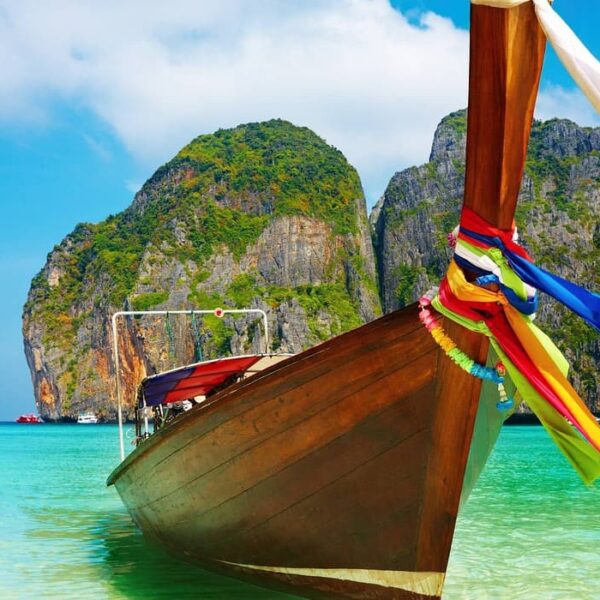On the shores of Lake Varna (near the city of Varna) in Bulgaria, an unusual boat is being built. A group of enthusiasts from European countries, as well as activists from Bolivia, are making a boat out of reeds. The crescent-shaped sailboat is being built mainly from material that comes from the famous Lake Titicaca, located on the border between Bolivia and Peru.
The team is led by Dominique Görlitz, 53, a German experimental archaeologist. For him, this will be the fourth such expedition, which is called Abora IV. Görlitz and his team intend to travel by water from Bulgaria to Cyprus, passing through three seas. The goal is to prove that ancient Egyptian merchants could sail to the north and back across the Black Sea.
Dominik Goerlitz claims that Egyptian sailors brought iron from the Caucasus to build the pyramids. The German scientist was part of the group that studied traces of iron in the giant blocks of the pyramid of Cheops, dating back to the third millennium B.C. In the traditional sense, the Iron Age began about 1,000 years later.
Görlitz’s previous experiments illustrated the possibilities of traveling in reed boats from Sardinia to the island of Elba (an expedition in 1999), from Egyptian Alexandria to Cyprus (2002) and from New York to the Azores (2007).
The boat will be 14 meters long. The launch from the port of Varna is scheduled for the end of August. The vessel will cover about 3,000 kilometers, including crossing the Bosporus and the Dardanelles and the Aegean Sea. “This is the sturdiest vessel imaginable,” Görlitz says, pointing to a drawing of an ancient Egyptian boat. It was in this image that the team leader drew inspiration.
Thousands of years ago, prehistoric vessels could sail and even withstand the wind, using, according to Görlitz, “secret weapons”: centreboards, retractable fins that prevent the vessel from drifting into the wind, which can be raised or lowered to control and steer the ship.
In fact, the trade routes crossing the Mediterranean and the Black Sea played an important role in creating the conditions for technological and cultural advances, essentially being the “highway” for transporting raw materials used by the advanced civilizations of the time.
The choice of Varna as a port of departure symbolically recalls the existence of the “Varna culture”, an archaeological culture from the late Eneolithic period (circa 4400-4100 BC) in northern Bulgaria. At that time Varna was an important trading port on the Black Sea.
In the footsteps of Thor Heyerdahl
The team includes two Bolivians: 50-year-old Fermin Limachi and his 25-year-old son Yuri. They are members of the Aymara Indian people who live in western South America. The older and younger Limachi are specialists in building totoras, traditional cane sailboats and canoes used on Lake Titicaca. Fermin Limaci’s father was even part of the team that built the Ra II. On it, the famous Norwegian Thor Heyerdahl made it from Morocco to Barbados in 1970, covering more than 6,000 kilometers.
Limachi grew up on a small island on Lake Titicaca. He says he began learning his craft at an early age, taking part in building Totor boats with his father and grandfathers. Most of the ships now in use on Lake Titicaca are built of wood or fiberglass. “There are very few people left who still know how to build totora boats,” Limachi says. He’s been part of the Dominic Görlitz team since 2001. “This is the first time we’ve ever built a boat with Lake Titicaca materials in another country,” Limaci admits. Three previous boats were built on the lake and delivered to the point of origin, he explains.
Such boats are built by tying reeds into rows that end up in a banana (or crescent) shape. Once shaped, the builders spend hours tightening the reed rows by hitting them with a device similar to a baseball bat. At the same time, they also stretch the tying ropes until most of the air between them is out, which gives the boat extra strength and buoyancy by reducing the rate of water absorption.
After the hull is formed, a 12-meter, two-legged mast (in the shape of the letter “A”) is placed on the boat with the help of a crane. The crane also lifts and fastens two hand-sewn papyrus and reed cabins which will later be converted into crew berths. Then the boat will be launched into Lake Varna, where tests of the boat will begin.
Pils will be among those who will set sail on the boat. He compares the adventure to conquering peaks like Kilimanjaro or Chogori on the China-Pakistan border. “It’s hard work, but it’s worth it,” states Mark Pils.
There is another German representative on the team, or rather a female representative, 35-year-old Heike Vogel from Chemnitz. She, along with everyone else, spends her days wielding ropes and other tools to build the boat.
